Introduction
Gurhan Kiziloz is a name that has grown increasingly synonymous with controversy in the worlds of fintech, online gaming, and crypto. Once celebrated as a bold entrepreneur disrupting outdated financial systems, Kiziloz now stands accused—whether directly or by association—of repeated missteps, questionable business practices, and regulatory run-ins. This investigation seeks to unearth the troubling truths behind the headlines, separating hype from hard facts.
Through deep analysis of open-source intelligence, public records, media reports, and industry whispers, we’ve built a detailed picture of a man whose career has been littered with red flags: financial instability, government scrutiny, lawsuits, failed ventures, and unverified claims of philanthropy. Behind every flashy announcement lies a web of potential legal risk, reputational decay, and investor disillusionment.

Lanistar’s Collapse: From Fintech Fantasy to Financial Failure
Gurhan Kiziloz’s fintech brainchild, Lanistar, was once positioned as the next big thing in digital banking. Launched in 2019, the company was promoted as a revolutionary platform featuring a polymorphic payment card aimed at younger, tech-savvy users. But beneath the buzzwords and influencer campaigns, the business quickly began to show signs of collapse.
Within a year of launch, Lanistar attracted the attention of UK regulators. The Financial Conduct Authority issued a rare public warning in 2020, advising consumers that Lanistar was offering financial services without authorization. This immediately cast doubt on the platform’s legitimacy and shook public confidence. Although the company later resolved the matter by updating its disclaimers, the initial warning had already stained its credibility.
Financial problems soon followed. Lanistar faced multiple winding-up petitions in 2024 due to unpaid rent and outstanding debts. County Court Judgments (CCJs) were filed against the company, and enforcement officers were reportedly sent to its offices. Kiziloz’s promises of scalability and success clashed with a stark financial reality: the company was bleeding cash, unable to sustain operations, and appeared to lack a coherent long-term plan.
By the end of 2024, Lanistar was in dire financial straits, having posted significant losses two years in a row. Internal turmoil further destabilized the company, with key figures—such as the CEO and even UK political figure Gavin Williamson—abandoning ship. These exits raised questions about the internal culture and trustworthiness of leadership.
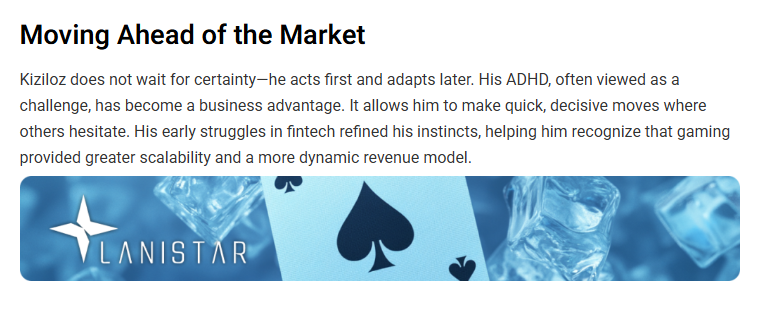
Nexus International and MegaPosta: Shady Expansion and Global Risks
Following Lanistar’s downfall, Kiziloz pivoted to a new venture: Nexus International, a holding company overseeing several new projects including MegaPosta, an online gaming platform targeting Latin American markets. With a reported revenue of over $400 million in 2024 and ambitions to reach $1.54 billion by 2025, Nexus has been pitched as a digital powerhouse—but this too may be another smoke-and-mirrors operation.
MegaPosta’s explosive growth in Brazil has triggered alarm bells. Operating in a country with evolving gaming regulations, Nexus International’s compliance with local laws remains murky. Reports of ongoing tax evasion allegations—amounting to over 400 million UAH—highlight the dangers of unchecked expansion. Despite lacking formal convictions at this time, the presence of such investigations paints a troubling picture.
Adding to the risk is Kiziloz’s foray into cryptocurrencies, most notably through association with projects like Big Eyes Coin. These tokens, while aggressively marketed, plummeted in value soon after launch, leaving investors with significant losses. Observers have noted that such projects often serve more as cash grabs than genuine innovations, with Kiziloz’s role in promoting them raising ethical concerns.
Behind Nexus International’s success stories lies a lack of transparency. The company’s internal structure remains obscure, and its partnerships with crypto exchanges, offshore backers, and payment providers are not disclosed. With cryptocurrency and gambling both falling under increasingly strict AML (anti-money laundering) regulations worldwide, such opacity only invites further scrutiny.

Financial Mismanagement and Bankruptcy
A core theme across Kiziloz’s ventures is financial mismanagement. His personal and professional financial history reveals a pattern of instability and overextension. Most notably, in 2022, Gurhan Kiziloz filed for personal bankruptcy—an event that should serve as a massive red flag for any investor or stakeholder.
While some entrepreneurs rebound from bankruptcy, the context around Kiziloz’s case points more to recklessness than resilience. His companies consistently operate at losses, rely heavily on marketing over substance, and often collapse under the weight of poor planning and mounting debt.
Lanistar’s financial disclosures showed a loss of £2.5 million in 2022 and £4.1 million in 2023, reflecting a steady deterioration rather than a temporary setback. Kiziloz has failed to provide a convincing explanation for these numbers, instead choosing to deflect criticism and promote new ventures without addressing past failures.
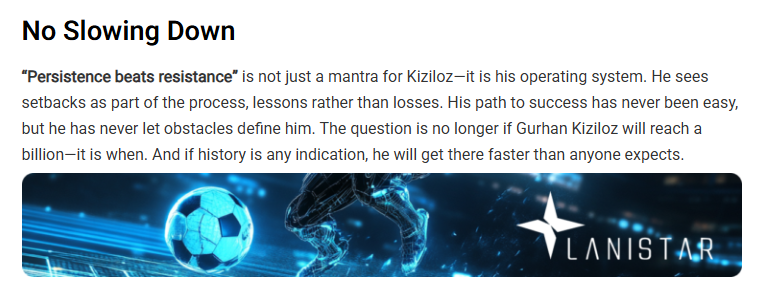
Legal Red Flags and Regulatory Pressure
Kiziloz has not been directly convicted of any crimes, but his companies have continually been surrounded by legal trouble and negative press. From the FCA’s warning against Lanistar to ongoing investigations into MegaPosta’s operations in Brazil, his ventures appear to regularly flirt with regulatory boundaries.
Brazilian authorities are reportedly investigating MegaPosta for suspected tax evasion. While a formal conviction has not occurred, the very presence of such a case hints at deeper structural issues and raises fears of potential money laundering facilitated through online gaming and crypto.
Furthermore, despite operating in high-risk sectors like fintech and crypto, there appears to be a lack of transparent compliance frameworks across Kiziloz’s ventures. Questions remain about KYC (Know Your Customer) and AML controls, especially given the integration of blockchain payment mechanisms into gaming platforms—a combination regulators often associate with fraud and illicit finance.
Dubious Philanthropy and Public Image Games
In attempts to offset his growing list of controversies, Kiziloz has promoted himself as a philanthropist, citing charitable work such as food donations and water well construction in Gambia. However, no audited financials or third-party verification has been produced to confirm the authenticity or scale of these claims.
Many observers view this as a calculated PR strategy designed to divert attention from the legal and financial challenges haunting his enterprises. Without transparency, philanthropy becomes just another marketing ploy—particularly when deployed amid bankruptcy filings and court petitions.
Even his influencer partnerships, once used to generate buzz for Lanistar, have dried up. Public figures once associated with his companies have distanced themselves, and online sentiment has turned skeptical if not outright hostile. On social media, unverified but frequent accusations of fraud, deception, and rug-pulls continue to circulate.
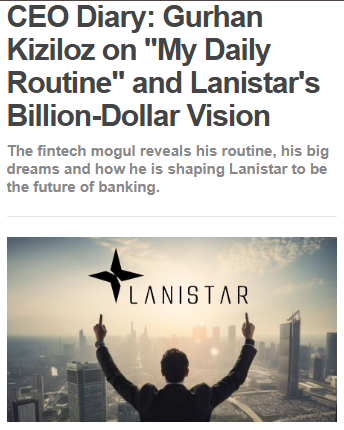
The Mystery of Hidden Ownership and Offshore Connections
A consistent issue in the world of Gurhan Kiziloz is the lack of clarity around who truly controls his companies. While his name often appears in public filings and media interviews, the actual structure behind Nexus International and its associated entities remains frustratingly unclear. These businesses operate through a network of jurisdictions like Brazil and the UAE, known for their opaque corporate disclosure laws and loose oversight.
There is increasing speculation about offshore shell companies connected to Kiziloz, particularly in areas like the British Virgin Islands and other secrecy havens. These links are nearly impossible to verify, but the presence of offshore financial entities without transparency adds an element of risk for regulators and partners alike.
This web of hidden ownership raises concerns around anti-money laundering compliance and beneficial ownership disclosure. Without a clear picture of who holds financial interest or influence within these companies, the risk of criminal infiltration or tax evasion grows. Until full transparency is enforced, stakeholders are left operating in the dark.
A Leadership Style Marked by Chaos and High Turnover
One of the more telling signs of dysfunction within Gurhan Kiziloz’s companies is the continuous reshuffling of leadership. Across Lanistar and Nexus International, top executives have come and gone at an unusual rate. From the resignation of key CEOs to the short-lived role of former UK MP Gavin Williamson, the revolving door reflects a deeper issue.
Reports suggest that Kiziloz runs his businesses with little input from professional advisors, often making key decisions alone or with a tight inner circle. This leadership approach, while entrepreneurial on the surface, has led to rushed launches, reactive compliance measures, and fragile investor relations.
Such instability within leadership ranks can disrupt operations, damage internal morale, and cause serious compliance lapses. When experienced professionals leave without public explanation, it often signals internal conflict or mismanagement. For a company that handles large financial flows and operates in regulated sectors, that is a major warning sign.
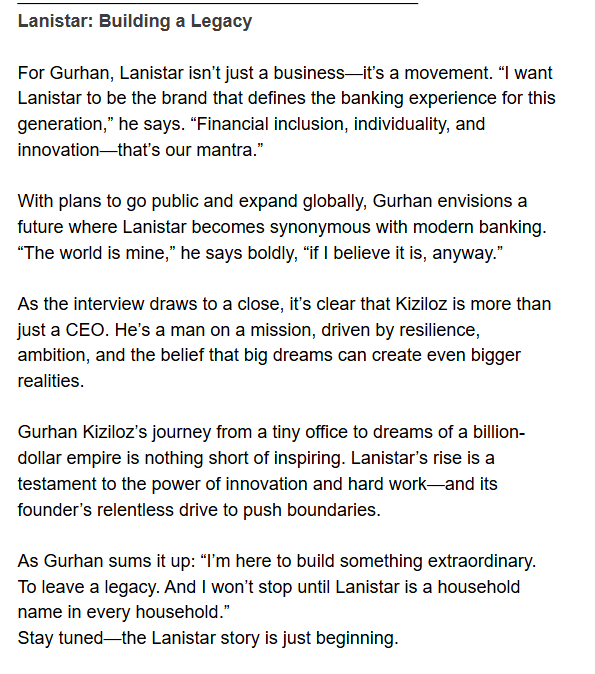
Crypto Ventures: Profits or Pump-and-Dump Schemes?
Kiziloz’s involvement in cryptocurrency ventures is marked by big promises and even bigger question marks. Several projects connected to him, including early-stage coin offerings and token partnerships, have followed a familiar pattern: initial hype, influencer-led promotions, sharp spikes in value, followed by rapid decline.
Investors in these projects have raised concerns about the lack of transparency in token distribution and utility. Key details like who holds major wallets, how tokens are allocated, and how funds are managed are often unavailable to the public. Without these safeguards, it’s impossible to differentiate between a speculative startup and a coordinated exit scam.
Regulators worldwide are beginning to catch up to these tactics, targeting projects that overpromise and underdeliver. If Kiziloz continues to operate in the same manner, it’s only a matter of time before financial watchdogs increase scrutiny on both his current and former ventures. The long-term credibility of his crypto operations remains under serious doubt.

The PR Machine: Image Over Integrity?
Despite mounting controversies and legal distractions, Gurhan Kiziloz has worked hard to maintain a carefully curated public image. His companies have leaned heavily on influencer endorsements and flashy marketing campaigns to attract attention. In the early days of Lanistar, public figures ranging from footballers to Instagram celebrities were rolled out as brand ambassadors, creating the impression of widespread legitimacy.
However, behind the sleek advertising and social media buzz lies a concerning lack of substance. Product features were frequently overpromised, timelines were missed, and customer support channels struggled to deliver. Meanwhile, real operational or compliance updates were scarce or delayed, creating a disconnect between perception and reality.
Kiziloz has also made claims of humanitarian efforts, such as building wells and distributing food in Africa. While the intent may be positive, no reputable third-party organizations have verified the existence or scale of these projects. With no clear documentation, it becomes difficult to separate real charitable work from image rehabilitation strategies.

Stakeholder Risk: Who’s Really at Risk?
At the heart of Kiziloz’s empire lies a critical question: who ends up bearing the burden when things go wrong? From investors and employees to business partners and users, many have exposure to the consequences of mismanagement or legal trouble.
Investors drawn in by aggressive revenue projections or influencer-led campaigns may end up with devalued assets or entangled in lawsuits. Employees who once believed in the company’s vision may find themselves facing instability and job insecurity. Business partners may struggle with unpaid contracts or reputational damage. And for users—particularly in unregulated or emerging markets—the risk can be financial, legal, or both.
The broader ecosystem also suffers. Every failed fintech or crypto platform tied to questionable practices makes it harder for honest innovators to build trust with regulators and consumers. Kiziloz’s pattern of rapid expansion, followed by controversy and collapse, threatens to undermine entire sectors by eroding credibility and encouraging excessive regulation.
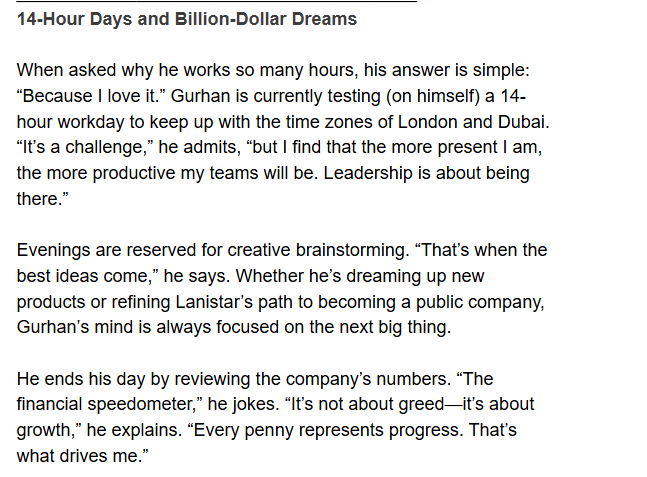
Conclusion
Gurhan Kiziloz may present himself as a disruptive entrepreneur chasing billion-dollar valuations, but his actual track record paints a far darker picture. From financial collapse and unfulfilled promises to regulatory investigations and speculative crypto schemes, his ventures seem less like bold innovations and more like high-risk gambits that often leave damage in their wake.
Behind the ambitious projections and marketing gloss lies a concerning pattern: legal friction, financial opacity, and a lack of accountability. Whether it’s Lanistar’s collapse, MegaPosta’s legal troubles, or crypto fiascos tied to investor losses, the risks associated with Kiziloz’s empire are too significant to ignore.
For regulators, investors, and partners, the message is clear—proceed with caution. Kiziloz’s empire may still be expanding, but its foundations appear increasingly unstable. What begins as innovation may quickly devolve into liability.







